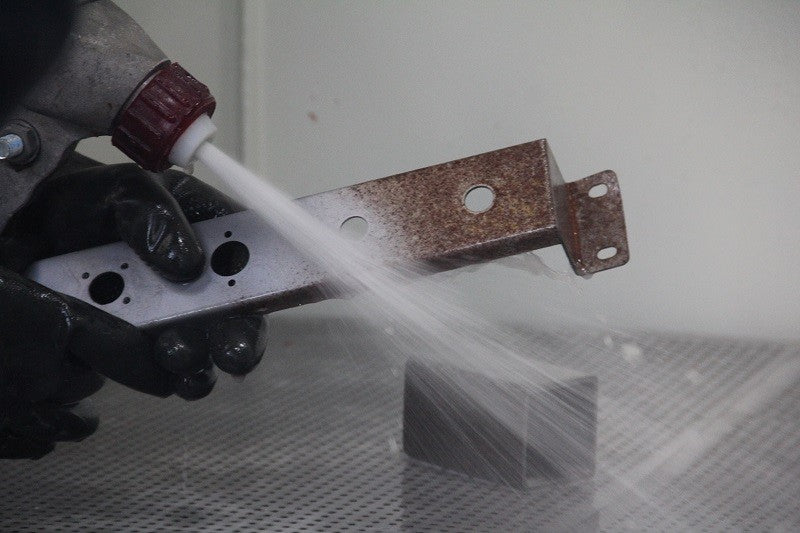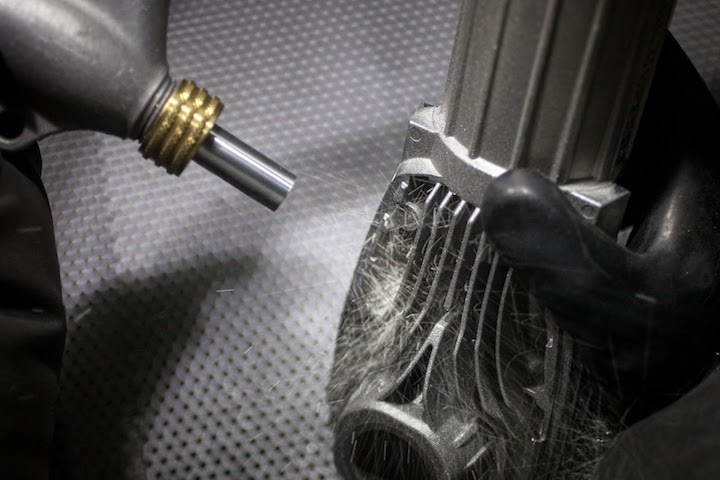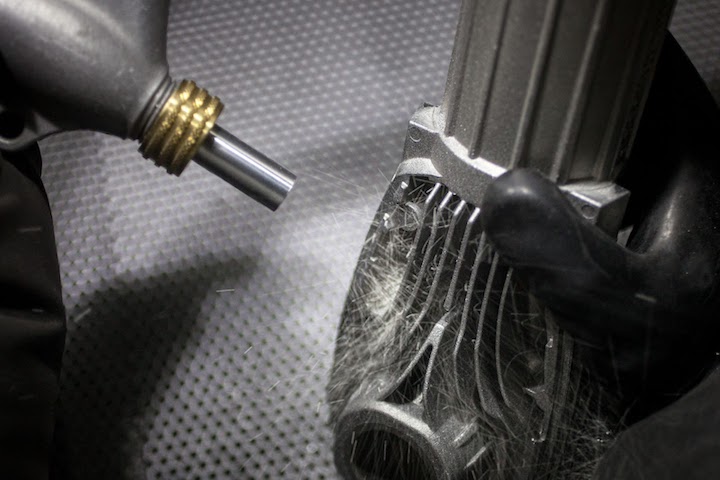Sandblasting is a versatile technique that has evolved over the years. Abrasive materials are rotated at high speeds to smooth, shape or clean surfaces. In this article, we will discuss the ins and outs of sandblasting, focusing on the different techniques and their applications.
Types of Sandblasting Techniques
Sandblasting comes in different forms, each tailored to specific needs and materials. Understanding these techniques is crucial to achieving the best results.
Wet blasting
Wet sandblasting uses water to control dust during the blasting process. The blasting medium is mixed with water before being released onto the surface.
This method is particularly suitable for minimizing particles in the air and is often used in sensitive environments.
Procedures and equipment
In the wet blasting process, a blasting agent (usually sand) is first mixed with water in a blasting machine. The resulting mud is then launched through a special nozzle onto the target surface. Equipment includes a high pressure washer and a sandblaster.
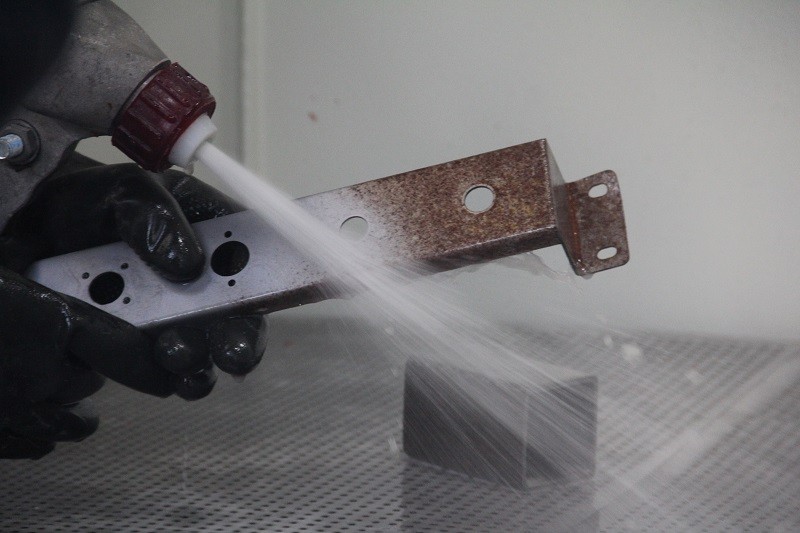
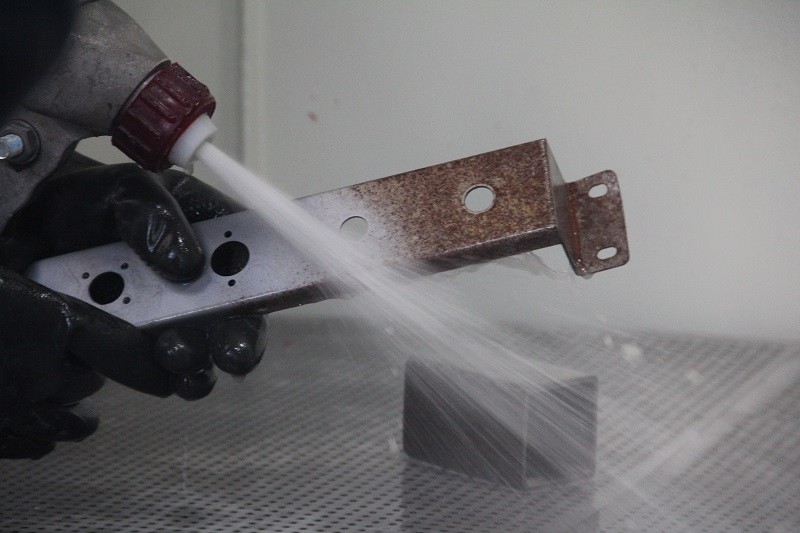
Image source: Internet
Benefits and applications
Wet sandblasting is known for its ability to reduce dust, making it suitable for indoor projects. It is often used for delicate surfaces, such as historic artifacts or soft stones, where it is important to minimize damage. The process also improves the efficiency of the blasting media, thus reducing overall consumption.
Dry blasting
Dry blasting, on the other hand, only uses high-pressure air to spray the blasting medium onto the surface. This method is versatile and widely used in various industries due to its efficiency.
Processes and machines
During dry blasting, blasting agent is loaded into a blasting machine and fired through a nozzle using compressed air. The high-pressure airflow accelerates the explosive particles so that they hit the surface with force.
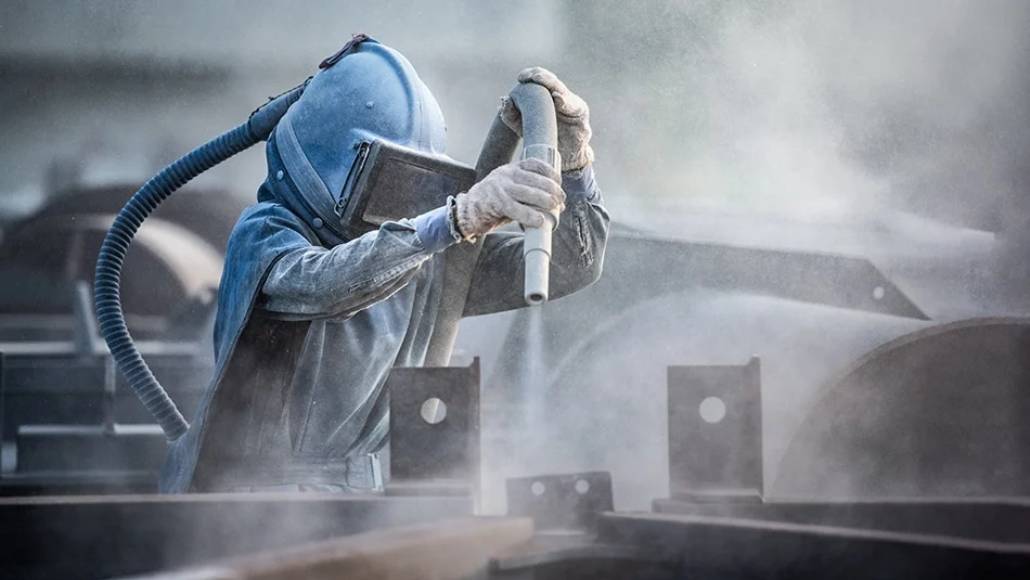
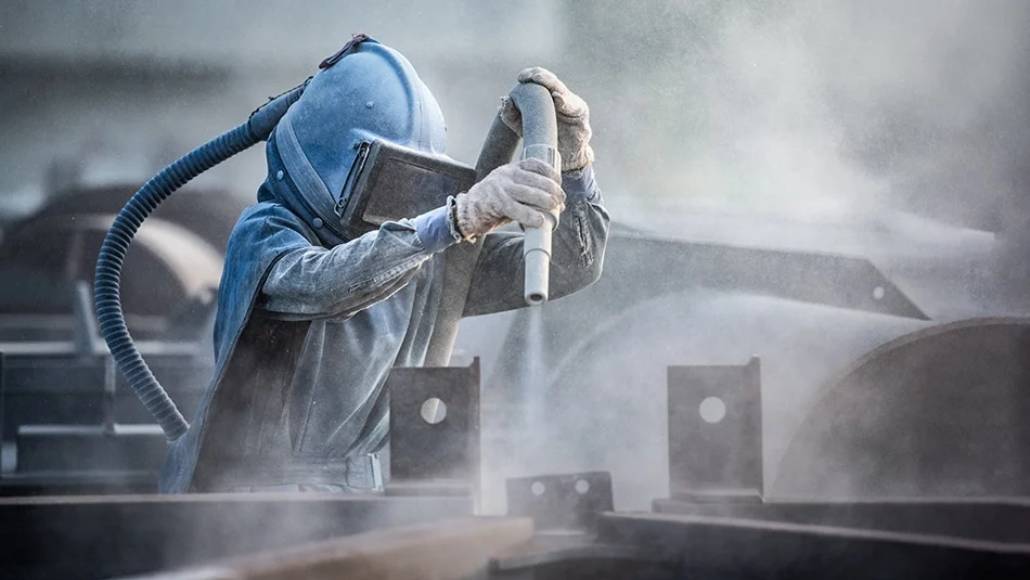
Suitability and limitations
Dry sandblasting is effective for a variety of surfaces, including metal, concrete and wood. It is commonly used for tasks such as rust removal, paint removal and surface preparation. However, compared to wet sandblasting, the process generates more dust and therefore requires adequate ventilation and safety measures.
pearl rays
Bead blasting uses small glass beads as the blasting medium. This technique is known to create a smooth surface without damaging the underlying surface.
Properties and uses
The glass spheres used in this technique are spherical and less abrasive than traditional sand. Bead blasting is often chosen because it cleans and blasts surfaces without deforming or damaging them.
Image source: Internet
Suitable materials for bead blasting
Sandblasting is suitable for materials such as aluminum, stainless steel and plastic. It is often used in the automotive industry to clean and refine components without changing their dimensions.
Soda explosion
Sodium bicarbonate (baking soda) is used as a blasting agent in soda blasting. The process is gentle but effective and therefore suitable for a variety of applications.
Overview and methodology
Soda blasting involves blasting baking soda particles onto a surface using compressed air. The soft nature of the particles allows for effective cleaning without damage, making it the preferred choice for sensitive materials.
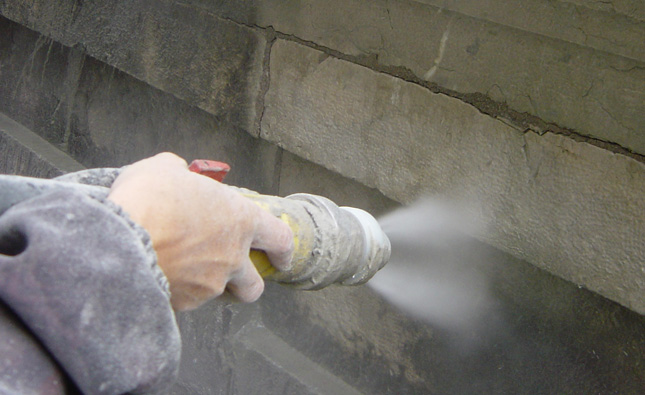
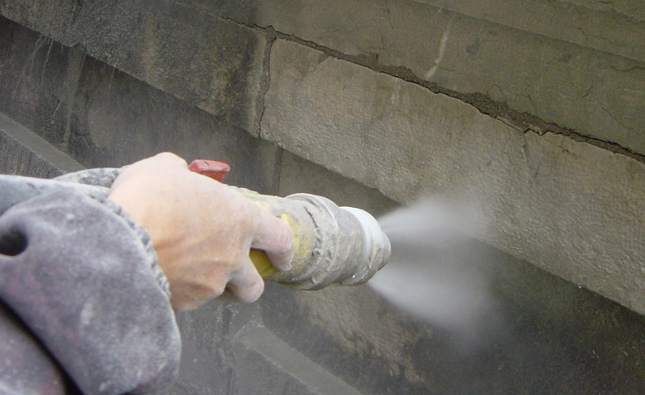
Applications and environmental aspects
Soda blasting is often used to clean and remove paint from surfaces such as wood, fiberglass, and certain metals. Because baking soda is non-toxic and water-soluble, it is environmentally friendly, making it the preferred choice for projects where environmental impact is a concern.
Understanding these sandblasting techniques provides valuable insight into selecting the right method for specific projects, ensuring optimal results without compromising the integrity of the surfaces being treated.
Steam jet process
Steam blasting, also known as wet blasting or liquid honing, is a surface preparation technique that uses a mixture of water, abrasives and compressed air.
This mixture is sprayed onto a surface under high pressure and provides a unique and effective method for cleaning, finishing and restoring a variety of materials.
Components of the steam jet process
- Water: Adding water to the blasting process controls dust formation, cools the blast particles and improves the overall efficiency of the process.
- Abrasives: Commonly used abrasives include glass beads, aluminum oxide, or other materials suitable for the desired surface finish.
- Compressed air: High-pressure compressed air accelerates the mud mixture and precisely directs it to the target surface.
Advantages of wet blasting
When the benefits of steam blasting are understood, its versatility and effectiveness in a variety of applications become apparent.
- Gentle on surfaces
In contrast to conventional dry blasting processes, steam blasting is known for its gentle method. By adding water, the impact of jet particles is dampened, preventing damage to sensitive surfaces and at the same time achieving effective cleaning.
- Uniform surface texture
Steam blasting ensures a smooth, uniform surface finish. Control over the mixture of abrasive and water allows for customized results, making it suitable for applications where a specific texture or appearance is desired.
- Minimum dust generation
Incorporating water into the process suppresses dust, creating a safer and more controlled work environment. This is particularly beneficial for projects in enclosed spaces or sensitive areas where dust containment is critical.
- Versatile application possibilities
Steam blasting is versatile and can be used on a variety of materials, including metals, plastics, ceramics and composites. Its adaptability makes it suitable for diverse industries, from automotive and aviation to restoration and art.
Wet blasting application areas
Understanding the diverse applications of vapor blasting demonstrates its importance in many industries and creative fields.
- Car restoration
Steam blasting has become the preferred method for restoring automotive components. From cleaning engine parts to repainting vintage car surfaces, its ability to remove contaminants without causing damage makes it ideal for maintaining the integrity of classic vehicles.
- Naval industry
In the marine industry, where surfaces are exposed to harsh environmental conditions, steam blasting is used to clean boat hulls, remove rust from ship components, and prepare surfaces for protective coatings.
- Aerospace maintenance
Precision is of utmost importance in aerospace maintenance and the steam jet meets this requirement. It is used to clean and refurbish aircraft components, ensuring optimal performance and longevity.
- Artistic surface finish
Artists and craftsmen use steam blasting for complex surface treatments in artistic projects. Whether you want to add texture to sculptures or create unique designs in metal, steam blasting offers a controlled, artistic touch.
- Cleaning industrial facilities
In industrial environments where machines and equipment are exposed to a certain amount of wear and tear, steam blasting is used for efficient cleaning. Removes contaminants, rust and old coatings, improving the durability and performance of industrial equipment.
wheel blasting
Spin blasting is an impressive surface treatment method and a powerful technique for cleaning, blasting and finishing various materials. This article examines the complexities of spin blasting and highlights its process, applications, and benefits.
Wheel blasting process
Spin blasting, also known as air blasting or wheel blasting, is a mechanical surface treatment method that uses centrifugal force to throw abrasive particles onto a surface. This process uses a high-speed wheel or turbine that rotates rapidly and launches abrasives at the target material.
Components of the wheel blasting process
- Abrasives: Common abrasives include steel grit, steel grit, aluminum oxide or glass beads, depending on the desired surface finish and the material being treated.
- Wheel or turbine: The heart of the wheel blasting system, the wheel or turbine, rotates at high speed, generating centrifugal force. This force throws the blasting medium onto the surface, allowing for efficient cleaning or finishing.
- Housing or cabinet: The wheel blasting process is often performed in a booth or chamber to contain the blasting medium and maintain a controlled environment.
Advantages of wheel blasting
Knowing the advantages of wheel blasting makes its efficiency and suitability for various applications clear.
- High productivity
Wheel blasting is known for its high productivity and is therefore preferred by large companies. The rapid rotation of the wheel ensures a continuous and uniform supply of blasting media, resulting in efficient surface treatment.
- Accuracy and consistency
The controlled, directed abrasive force of the rotating wheel results in precise, uniform surfaces. This makes wheeled blasting suitable for applications where uniformity is important.
- Versatile application possibilities
Wheel blasting is versatile and applicable to a wide range of materials, including metals, alloys and composites. Its adaptability makes it an indispensable method in industries such as manufacturing, automotive and construction.
- Effective rust and coating removal
The kinetic energy generated by the rotating wheel allows wheel blasting to effectively remove rust, coatings and contaminants from surfaces. This is particularly beneficial for restoration and preparing materials for subsequent treatments.
Application areas for wheel blasting
Research into the many possible uses of wheel blasting highlights its importance in various industries and in surface treatment.
- Metal cleaning and processing
In industries such as manufacturing and metallurgy, wheel blasting is used to clean and prepare metal surfaces. Removes scale, rust and old coatings, ensuring excellent adhesion for subsequent treatments.
- Surface structuring for coating adhesion
Rotary blasting creates structured surfaces that improve the adhesion of coatings such as paints, primers or protective varnishes. This is critical in applications where a strong, durable surface is essential.
- Deburring and sanding
In manufacturing processes, centrifugal blasting is effective for deburring and sanding metal components. Efficiently removes burrs, sharp edges and unwanted sand residue, improving the overall quality of machined parts.
- Rays to relieve tension
Shot peening applies compressive stress to metal surfaces, improving their fatigue resistance and durability. This is particularly important in the aerospace and automotive sectors.
Dry ice blasting
Dry ice blasting, also known as CO 2 blasting, involves launching small pellets of dry ice at high speeds to clean and prepare surfaces.
Dry ice pellets consist of carbon dioxide ( CO2 ) and are extremely cold at -78.5 degrees Celsius (-109.3 degrees Fahrenheit). The process utilizes the thermal and kinetic energy of dry ice pellets to remove contaminants and achieve various surface treatment objectives.
Components of the dry ice blasting process
- Dry ice pellets: These are the primary abrasives and are created by pressurizing and cooling carbon dioxide gas.
- Pellet supply system: Dry ice pellets are transported to the jet nozzle via a pellet supply system and accelerated there with compressed air.
- Jet Nozzle: The jet nozzle directs dry ice pellets to the target surface at high speed, effectively removing contaminants through a combination of thermal shock and kinetic energy.
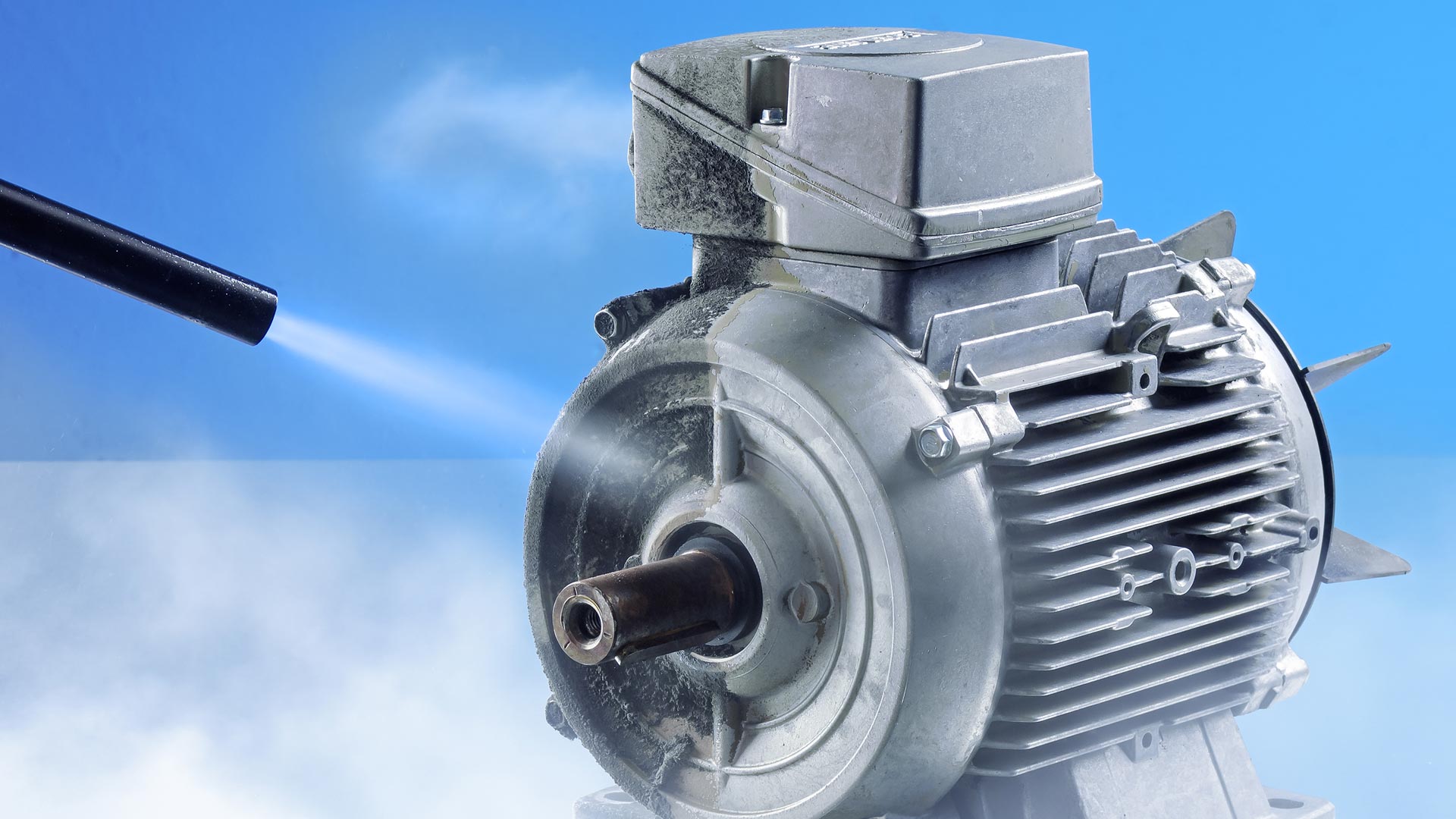
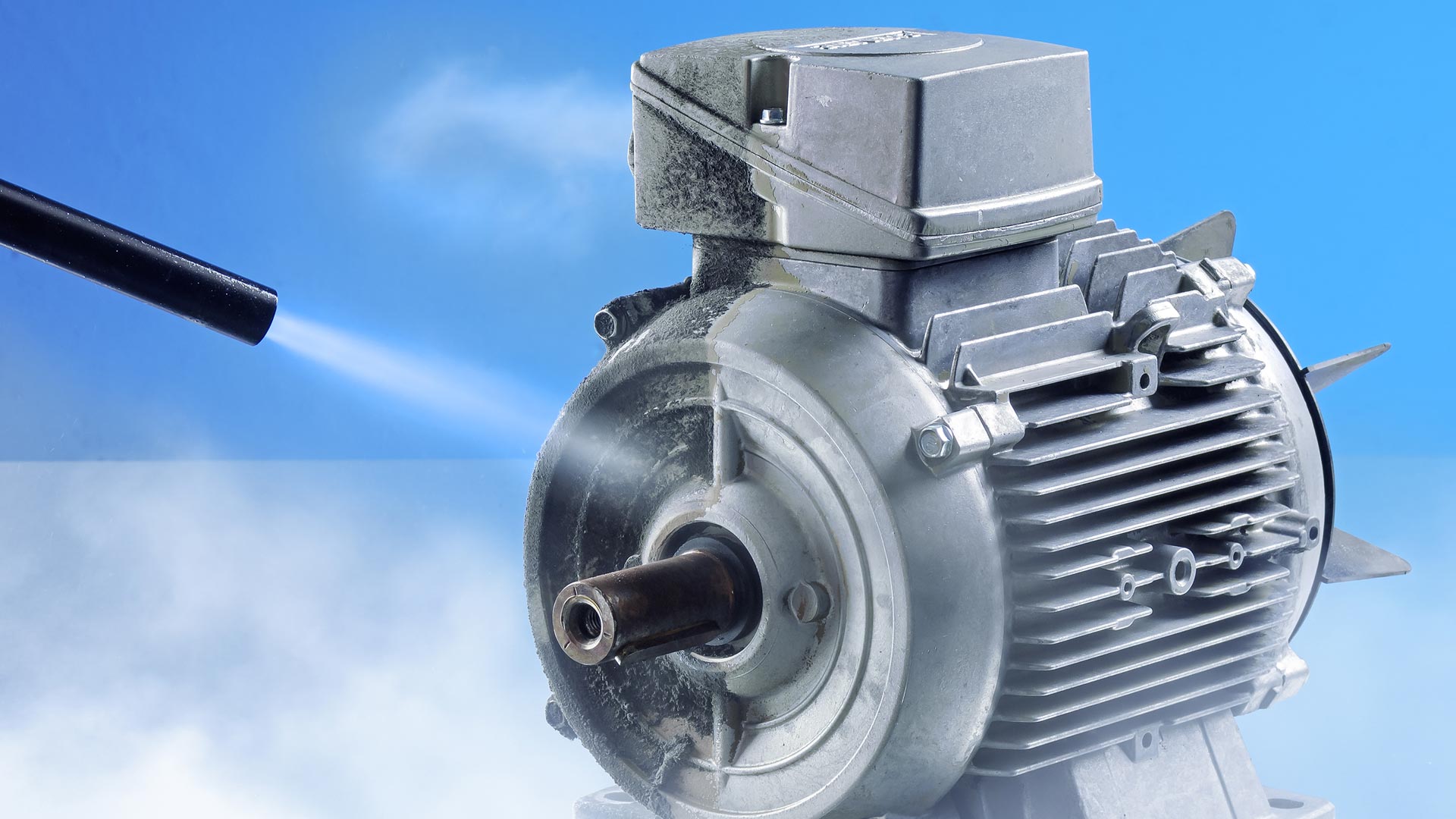
Advantages of dry ice blasting
Understanding the benefits of dry ice blasting highlights its effectiveness and environmental impact.
- Non-abrasive and non-conductive
Dry ice blasting is non-abrasive and is therefore suitable for sensitive surfaces without damaging them. Furthermore, it is non-conductive and can therefore be used safely in electrical components without risk of electrical conductivity.
- Environmentally friendly
The process uses CO 2, a by-product of various industrial processes, as an explosive agent. As dry ice pellets sublimate on contact, the method is environmentally friendly and does not produce secondary waste.
- No waste
Dry ice blasting leaves no residue or secondary residue. Sublimated dry ice turns into gas and leaves a clean, residue-free surface. This is particularly advantageous in industries where cleanliness and minimal cleaning effort are crucial.
- Reduced downtime
The non-destructive effect of dry ice blasting minimizes disassembly and equipment downtime. Allows cleaning and preparation of surfaces during ongoing operations, contributing to greater operational efficiency.
Application areas for dry ice blasting
By exploring the wide range of possible applications of dry ice blasting, its versatility in different industries and surface treatment becomes clear.
- Cleaning industrial facilities
Dry ice blasting is often used to clean industrial facilities and machines. Efficiently removes contaminants such as grease, oil and residue, ensuring optimal performance and extending the useful life of the equipment.
- Restoration and preservation of monuments
Dry ice blasting is a preferred method for restoration projects, especially delicate surfaces or historic artifacts. Gently removes contaminants without causing damage, preserving the integrity of the restored item.
- Food and beverage industry
Because dry ice blasting is non-toxic and residue-free, it is suitable for cleaning equipment in the food and beverage industry. It effectively removes bacteria, mold and other contaminants without the use of harsh chemicals.
- Restoration of fire and smoke damage
When renovating fire and smoke damage, dry ice blasting is used to remove soot, smoke residue, and odors from surfaces. The non-abrasive, residue-free properties of dry ice blasting are beneficial in restoring the condition prior to damage.
Vacuum blasting
In the area of surface preparation and cleaning, vacuum blasting has proven to be a powerful and efficient method. This allows excellent surface qualities to be obtained.
Vacuum blasting, also called dustless blasting or loop blasting, combines blasting media with a powerful vacuum system.
This integrated approach effectively captures and retains abrasive and removed contaminants, preventing them from spreading into the environment.
Components of the vacuum blasting process
- Abrasives: Common abrasives include steel shot, garnet or other materials suitable for the desired surface finish and the material being treated.
- Jet nozzle: The jet nozzle directs high-velocity abrasive to the target surface, removing contaminants and preparing the surface for subsequent treatments.
- Vacuum System: The vacuum system connected to the blast system captures and holds blast media and dirt. This prevents dust and contaminants from becoming airborne.
- Recovery and recycling system: Some vacuum blasting systems feature a recovery and recycling system that separates reusable blasting media from waste, contributing to cost efficiency and environmental sustainability.
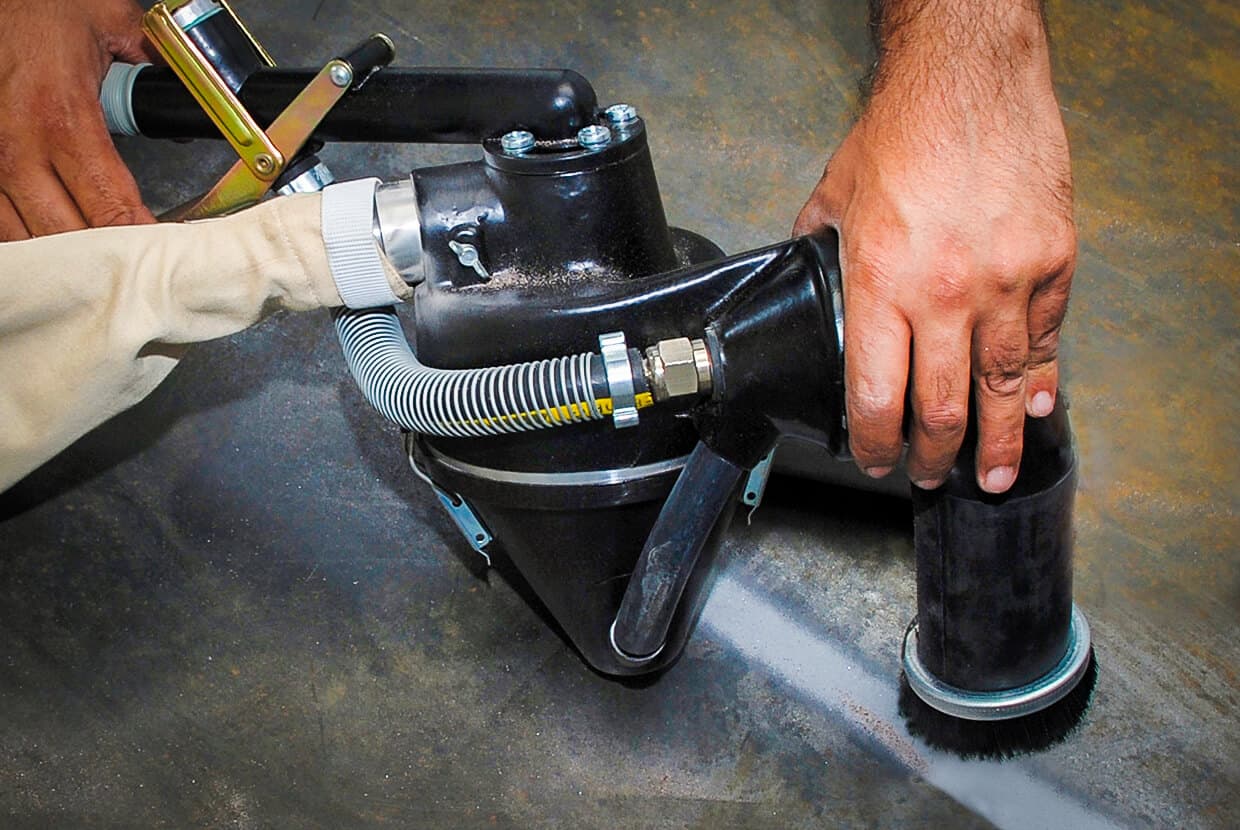
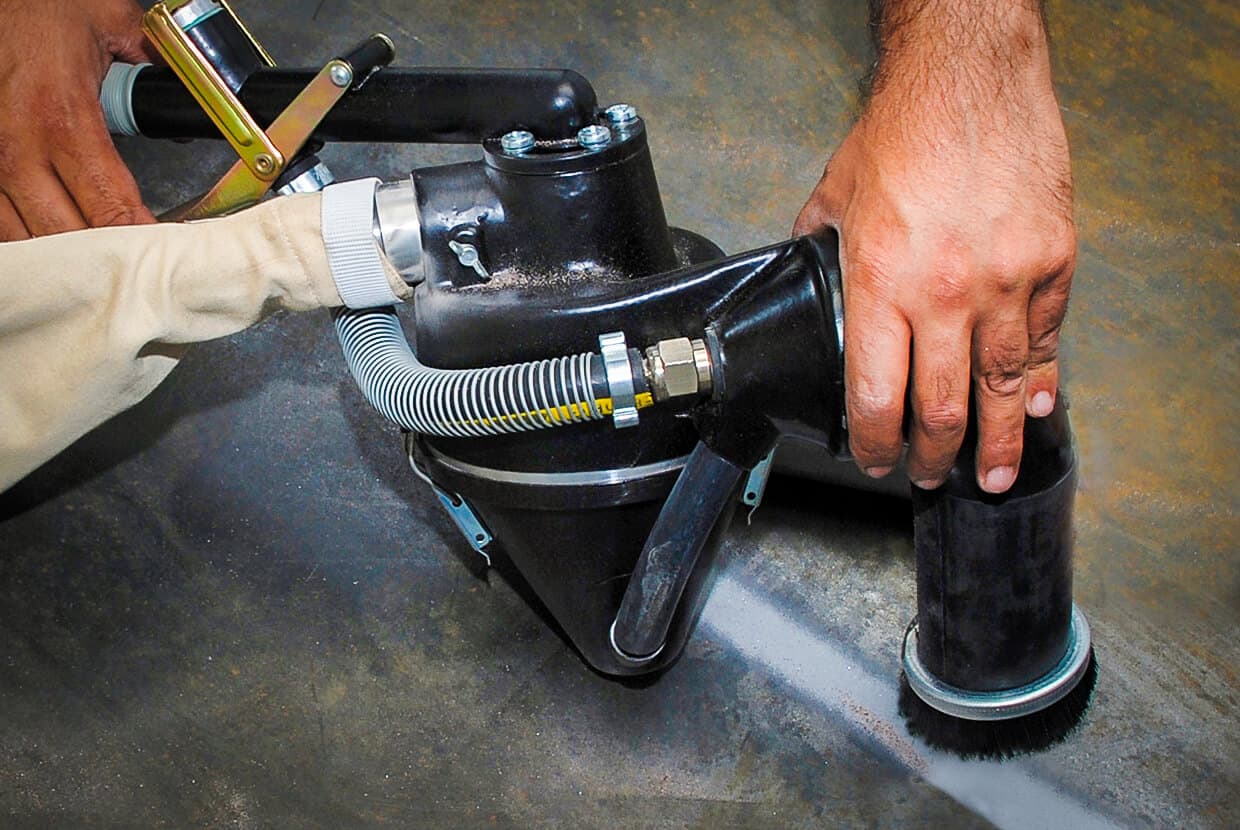
Advantages of vacuum blasting
Understanding the benefits of vacuum blasting reveals its efficiency, environmental friendliness and suitability for various applications.
- Dust-free operation
The integrated vacuum system ensures dust-free operation, making vacuum blasting suitable for projects in sensitive environments or enclosed spaces where dust containment is critical.
- Environmental sustainability
By capturing and containing blast media and contaminants, vacuum blasting contributes to environmental sustainability. The ability to recycle blasting media further reduces waste and minimizes environmental impact.
- Operator safety
The dust-free operation of vacuum blasting increases operator safety by reducing exposure to airborne particles. The need for protective equipment is also minimized, resulting in a safer working environment.
- Versatile application possibilities
Vacuum blasting is versatile and applicable to a variety of materials, including metals, concrete and wood. Its adaptability makes it suitable for a variety of sectors, from construction and shipbuilding to restoration projects.
Vacuum Blasting Applications
Exploring the many uses of vacuum blasting reveals its importance for optimal surface preparation and cleaning.
- Marine and shipyard maintenance
In the marine industry, vacuum blasting is often used to clean and prepare ship surfaces. Efficiently removes marine growth, rust and old coatings, ensuring the longevity and performance of ship structures.
- Cleaning industrial facilities
Vacuum blasting is used to clean industrial plants and machines. Effectively removes contaminants such as paint, rust and residue, contributing to the maintenance and optimal functioning of industrial facilities.
- Concrete surface preparation
In construction and renovation projects, vacuum blasting is used to prepare concrete surfaces. Old coatings, contaminations and cement sludge are removed, creating an ideal surface for coatings, coatings or repairs.
- Historic restoration
Because it operates without dust, vacuum blasting is well suited for historic restoration projects. Protects delicate surfaces and removes contaminants without causing damage, contributing to the restoration of historic structures.

